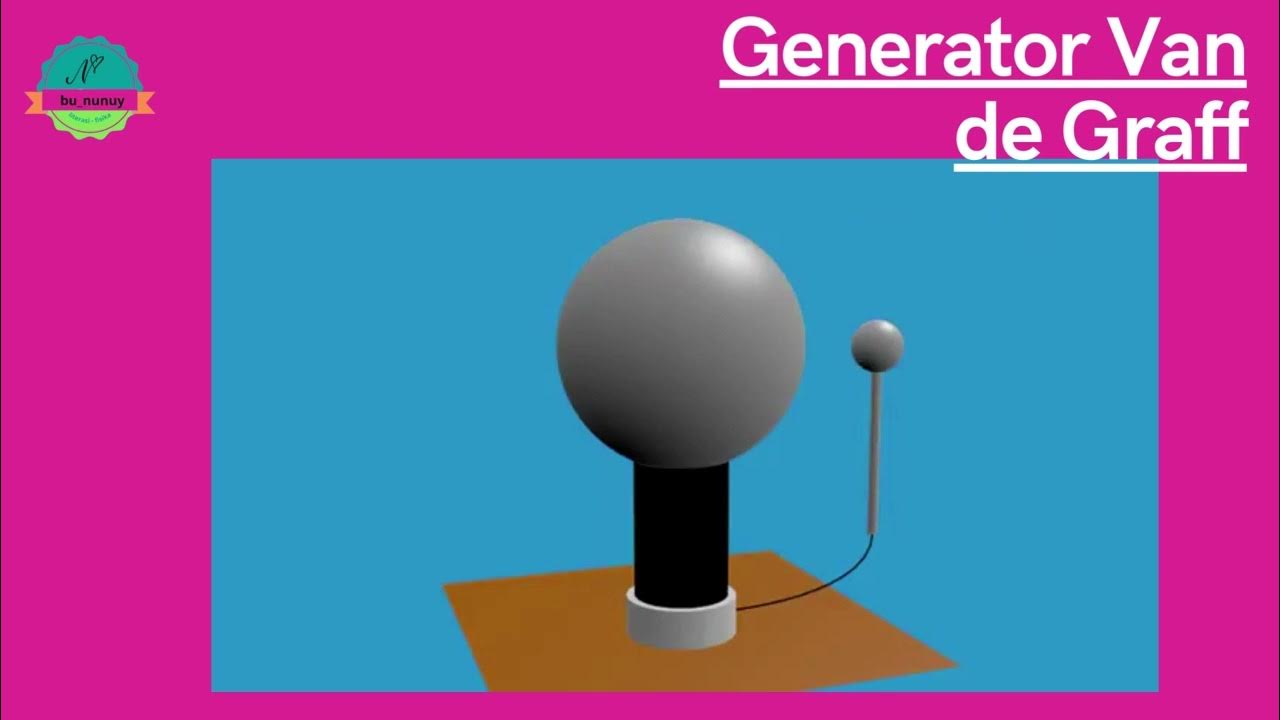Electric Charge: Crash Course Physics #25
Summary
TLDRThis script explores the principles of static electricity, explaining how objects can become charged through friction or contact, leading to attractions or repulsions between them. It delves into the atomic structure, highlighting the role of electrons and protons in creating electrical neutrality or imbalance. The video introduces the concepts of conductors and insulators, explaining how they allow or restrict the flow of electrons. It also covers the law of conservation of electric charge, demonstrating how charges can be transferred or induced without direct contact. The script concludes with an introduction to Coulomb's Law, which quantifies the force between charged particles, and its application in calculating electrostatic forces.
Takeaways
- ⚡ Static electricity is caused by an imbalance of positive or negative charges in an object, seeking equilibrium.
- 🔬 The transfer of electrons between objects can result in either repulsion (like charges) or attraction (opposite charges).
- 🌐 Atoms consist of positively charged protons and negatively charged electrons, usually balanced to be electrically neutral.
- 🏗️ In conductors like copper, electrons can move freely, while in insulators like wood, electrons are tightly held.
- 🔋 An imbalance of charge can be created by friction, contact, or induction, influencing how objects interact.
- 🌿 The ancient Greeks observed charging by friction with amber and fur, a fundamental principle of static electricity.
- 🌎 The law of conservation of electric charge states that charge cannot be created or destroyed, only transferred.
- 🌐 Charging by induction involves redistributing charge within an object without direct contact, creating a net charge.
- 🌐 Grounding a charged object to the Earth neutralizes it by allowing charge to flow into the Earth, a conductor.
- 📐 Coulomb's Law quantifies the force between charged particles, using the product of their charges divided by the square of the distance between them.
Q & A
What is static electricity and how does it occur?
-Static electricity occurs when an object obtains a net amount of positive or negative electric charge, creating an imbalance that seeks to return to equilibrium.
How does the experiment with two pieces of tape illustrate the principle of static electricity?
-When two pieces of tape, both stuck to a table, are ripped off and tried to be stuck together, they repel each other if they both have stolen negative charges from the table, demonstrating like-charges repel. However, if one piece is on top of the other and then ripped off, they attract each other because they end up with opposite charges.
What are the roles of protons and electrons in an atom regarding electric charge?
-Atoms contain charged particles: positive protons and negative electrons. Normally, there's an equal number of each, making the atom electrically neutral with a net electric charge of 0.
What is the difference between conductors and insulators in terms of electricity?
-Conductors, like copper, allow free electrons to move freely throughout the solid, while insulators, like wood, hold onto electrons tightly, limiting their flow.
How is charging by friction demonstrated in the script?
-Charging by friction is demonstrated when a glass rod is rubbed with a cloth, causing electrons to transfer from the rod to the cloth, leaving the rod with an overall positive charge.
What is the law of conservation of electric charge, as mentioned in the script?
-The law of conservation of electric charge states that you can never create a net electric charge; instead, charge can only move from one place to another, maintaining the overall charge at zero.
How does charging by contact work, as explained in the script?
-Charging by contact occurs when a positively charged object comes into contact with a neutral object, causing electrons to move from the neutral object to the positive one until both objects have the same charge distribution.
What is meant by polarizing a metal rod, and how does it relate to static electricity?
-Polarizing a metal rod involves redistributing the charge within the rod to create an imbalance of charge without the rod being in contact with another object. This is achieved by bringing a charged object close to the rod, causing electrons to move within the rod.
How does grounding help in neutralizing a charged object?
-Grounding connects a charged object to a large neutral conducting object, like Earth, allowing the charge to leak into the Earth, thus neutralizing the object.
What is Coulomb's Law and how is it used to calculate the force between charged particles?
-Coulomb's Law states that the force between two charged particles is equal to the product of the charges divided by the distance between them squared, multiplied by a proportionality constant (k). This law is used to calculate the magnitude of the force between charged particles and can determine whether the force is attractive or repulsive based on the signs of the charges.
How does the elementary charge relate to the charge of a single electron?
-The elementary charge is the charge of a single electron, which is a negative 1.6 times 10 to the negative 19th Coulombs. It is used as a fundamental unit when measuring and calculating the charge of particles.
Outlines

This section is available to paid users only. Please upgrade to access this part.
Upgrade NowMindmap

This section is available to paid users only. Please upgrade to access this part.
Upgrade NowKeywords

This section is available to paid users only. Please upgrade to access this part.
Upgrade NowHighlights

This section is available to paid users only. Please upgrade to access this part.
Upgrade NowTranscripts

This section is available to paid users only. Please upgrade to access this part.
Upgrade NowBrowse More Related Video

TIPOS DE ELETRIZAÇÃO: POR ATRITO, CONTATO E INDUÇÃO (ELETROSTÁTICA) | Resumo de Física para o Enem

CHARGING PROCESS | STATIC ELECTRICITY | FRICTION CONDUCTION INDUCTION

LISTRIK STATIS

Eletrostática (Processos de Eletrização) - Aula 02

Eduscribe : Fisika (Listrik Statis) Part 1

Listrik Statis, Konsep Hukum Coulomb dan Contoh-contoh Soal
5.0 / 5 (0 votes)